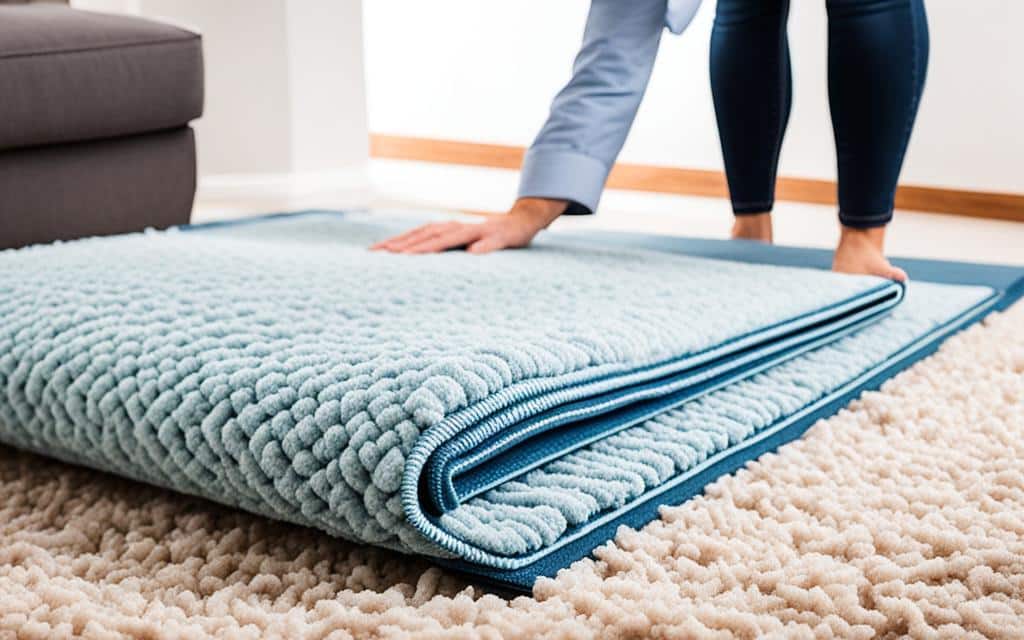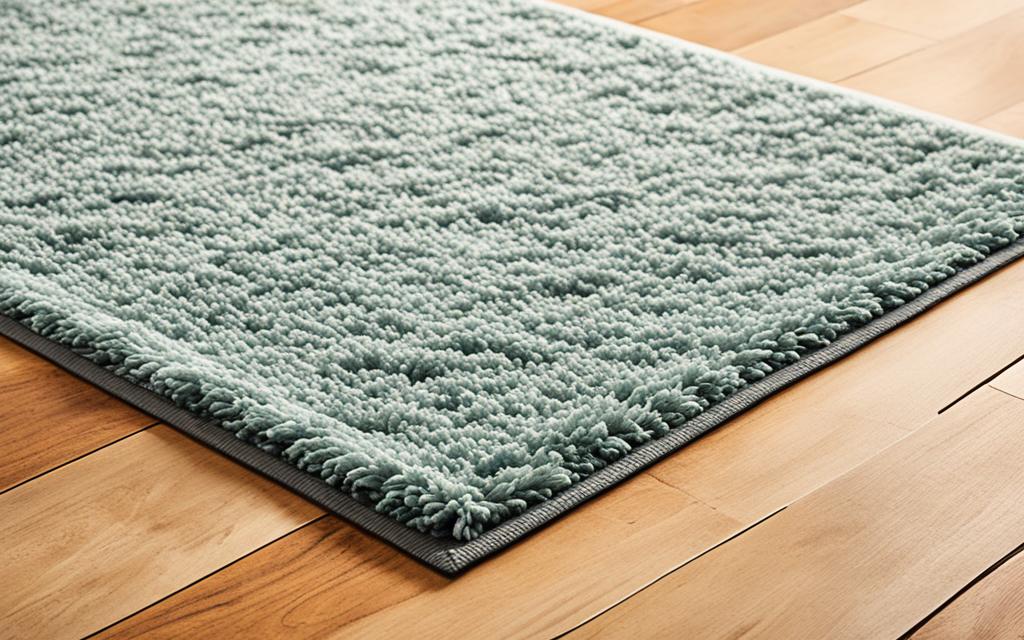Are you a fan of Ruggable rugs but find yourself wondering if you can use them without the pad? You’re not alone. Many people are curious about whether it’s possible to skip the pad and still enjoy the convenience and style of these machine washable rugs.
But is it a wise choice? Let’s explore the pros and cons of using a Ruggable rug without the pad and see what users have to say.
Key Takeaways:
- The rug pad that comes with a Ruggable rug serves an important purpose in terms of stability, safety, and longevity.
- Using a Ruggable rug without the pad may compromise the rug’s ability to stay in place and could pose a risk of slipping or tripping.
- Alternative options, such as using a different non-slip underlay or exploring different rug brands, are available for those who prefer to go without the pad.
- It’s essential to carefully evaluate the advantages and disadvantages before deciding whether to use a Ruggable rug without the pad.
- Ultimately, the choice depends on your specific needs and preferences.
The Importance of the Rug Pad
The rug pad that comes with a Ruggable rug serves an important purpose. It not only prevents the rug from sliding or shifting, but it also provides cushioning and support.
The non-slip pad helps to maintain the safety of the rug, especially in high-traffic areas. Without the rug pad, the Ruggable rug may not stay in place and could pose a risk of slipping or tripping.
Additionally, the rug pad enhances the longevity of the rug by reducing wear and tear. It acts as a protective barrier between the rug and the floor, preventing friction and damage.
Using a Ruggable rug without the pad may lead to the rug wearing out faster, as it is directly exposed to the floor’s surface. The extra layer of the rug pad helps to absorb impact and minimize the impact of foot traffic and furniture placement.

Exploring Alternatives and Considerations
While the rug pad that comes with a Ruggable rug is designed to work seamlessly with the rug cover, some users may prefer to explore alternatives or consider using the rug without the pad.
It is important to note that using a Ruggable rug without the pad may compromise the stability and safety of the rug, as well as its longevity. The rug pad provides essential non-slip properties that keep the rug in place, especially in high-traffic areas of the home.
However, if you choose to go without the pad, there are alternative options available. One potential solution is using a different non-slip underlay that provides similar grip and security. This allows you to enjoy the convenience of a Ruggable rug while tailoring the underlay to your specific needs.
Another option to consider is exploring different rug brands that do not require a separate pad. These brands may have innovative designs or materials that eliminate the need for an additional layer underneath. By choosing such a rug, you can enhance the simplicity of your home decor while still enjoying the benefits of machine washability and durability.
FAQ
Can I use a Ruggable rug without the pad?
While it is possible to use a Ruggable rug without the pad, it is not recommended. The rug pad serves as a non-slip base and helps to secure the rug in place. Without the pad, the rug may slide or shift, posing a risk of slipping or tripping. It also provides cushioning and support, enhancing the longevity of the rug.
Why is the rug pad important for a Ruggable rug?
The rug pad that comes with a Ruggable rug is essential for maintaining the stability and safety of the rug. It prevents the rug from sliding or shifting, especially in high-traffic areas. The pad also offers cushioning and support, improving the comfort and longevity of the rug.
Are there alternatives to using the rug pad that comes with a Ruggable rug?
Yes, there are alternative options if you prefer not to use the rug pad that comes with a Ruggable rug. You can explore using a different non-slip underlay or consider purchasing a rug from a different brand that does not require a separate pad. However, it is important to carefully evaluate the advantages and disadvantages before making a decision.

